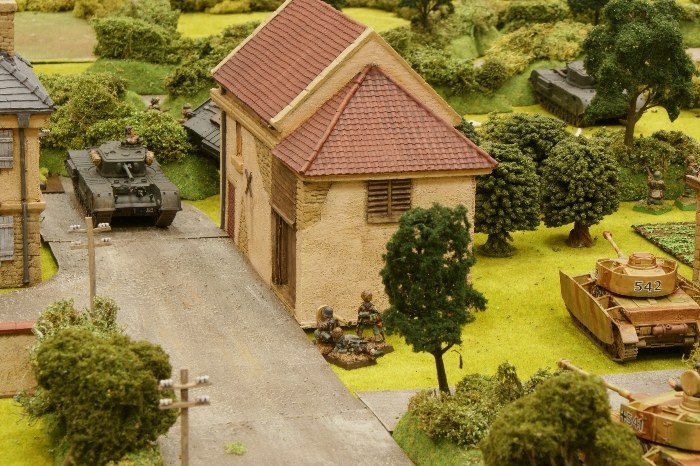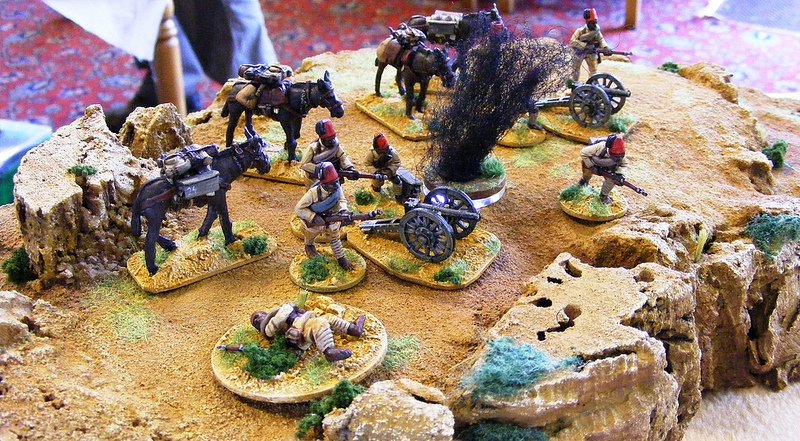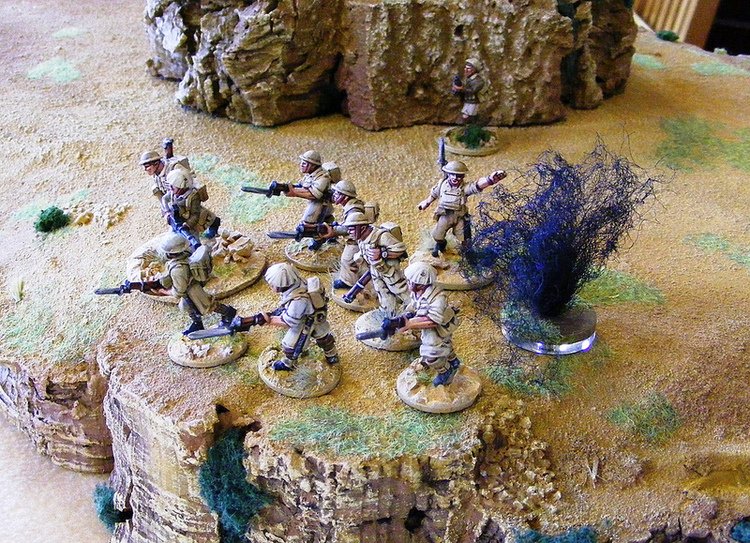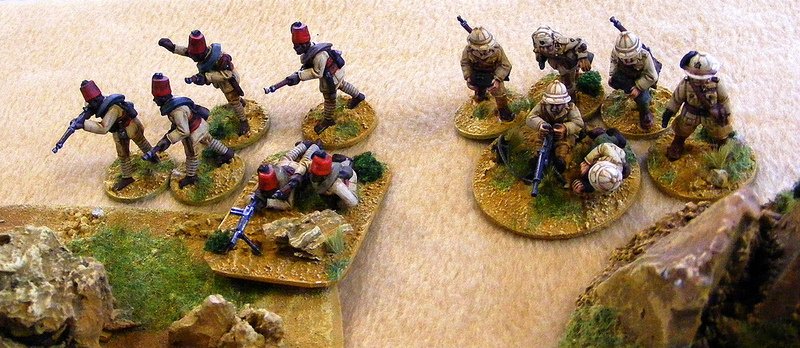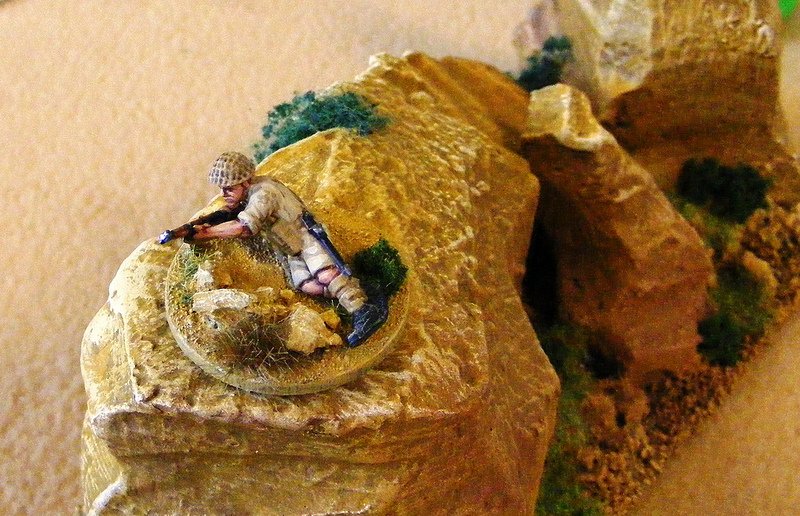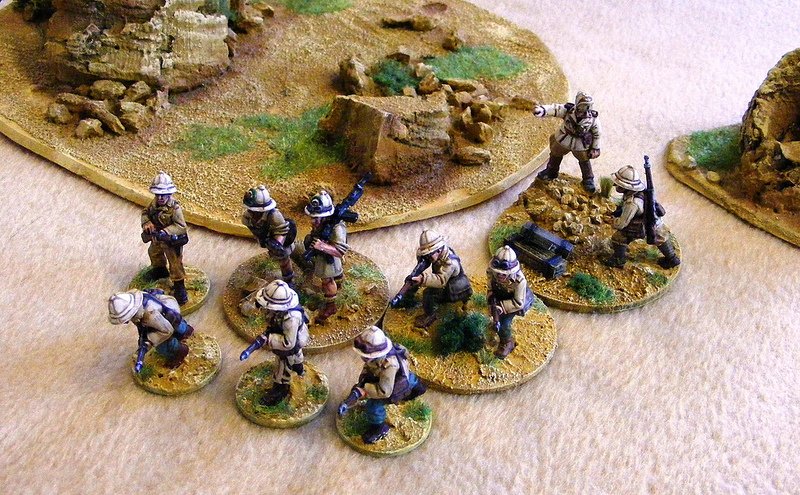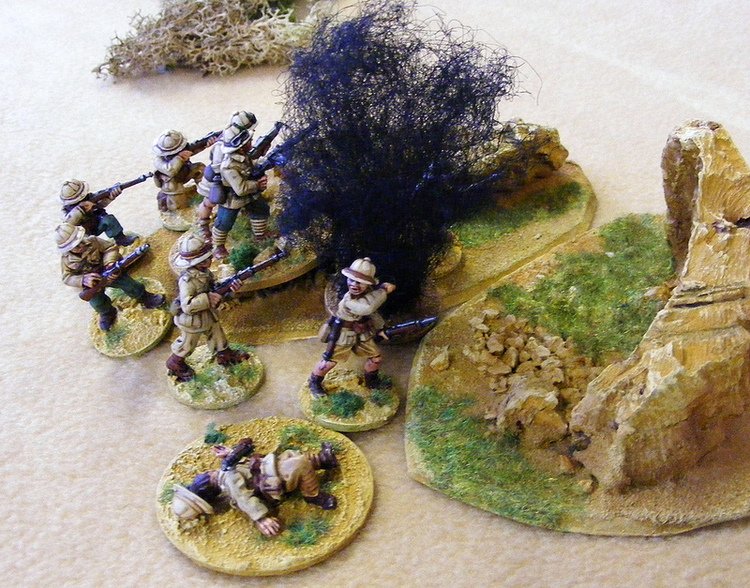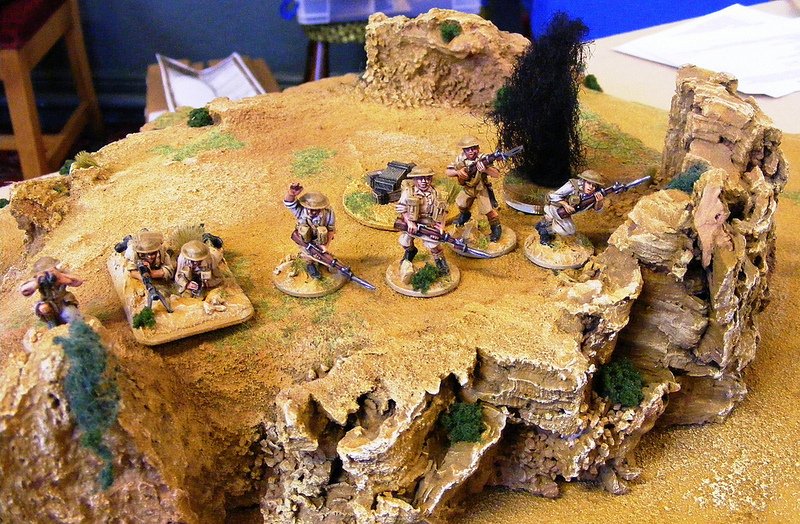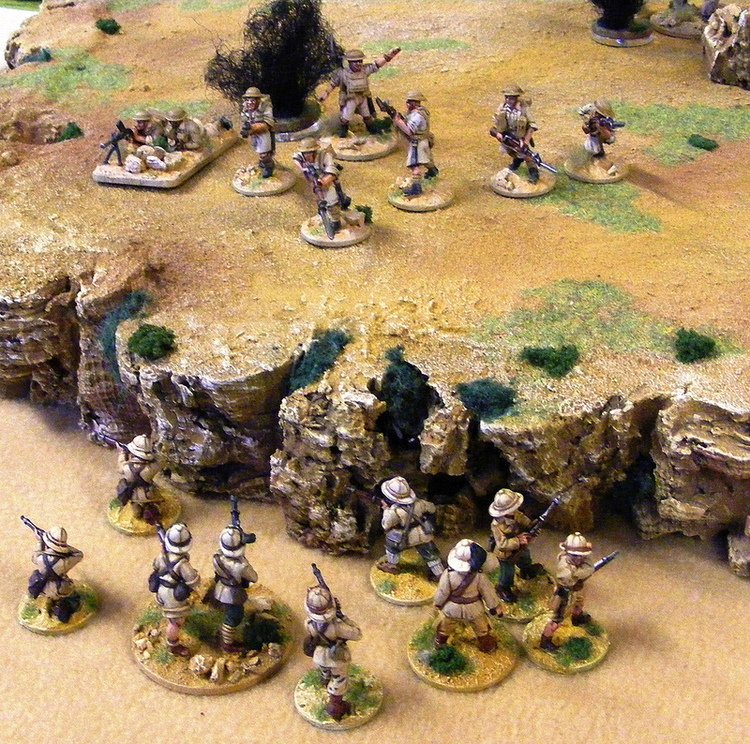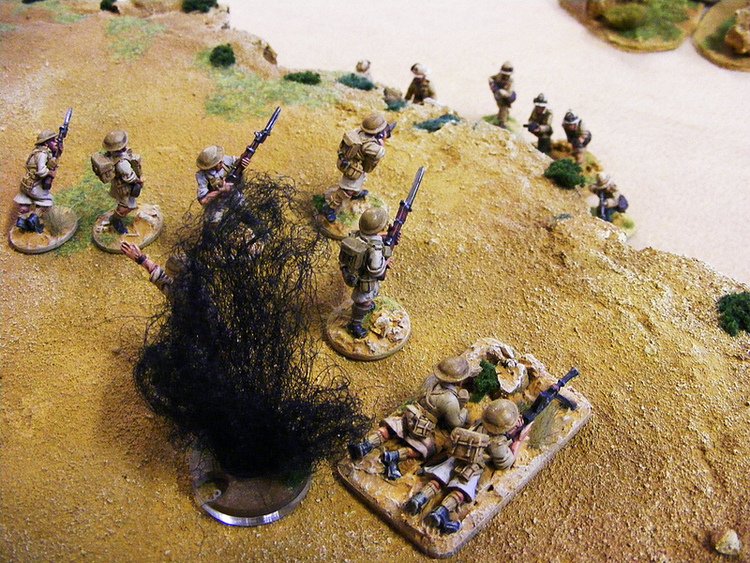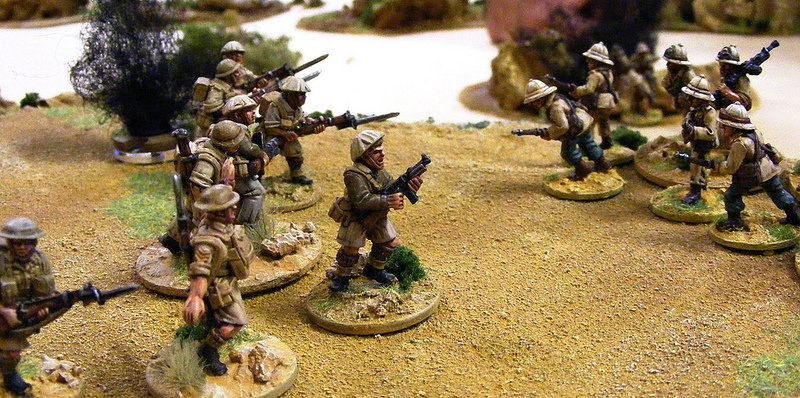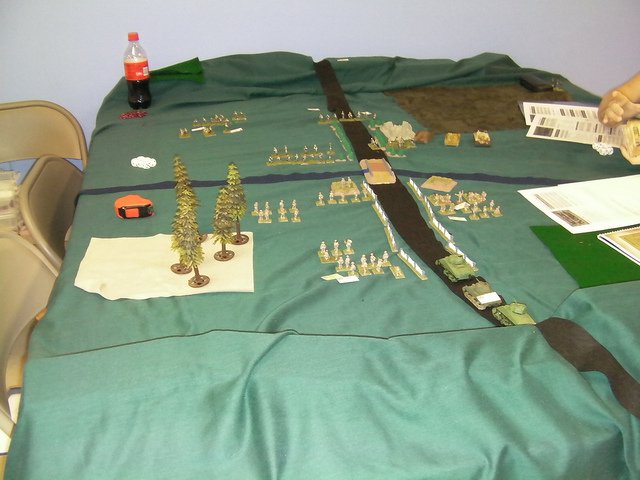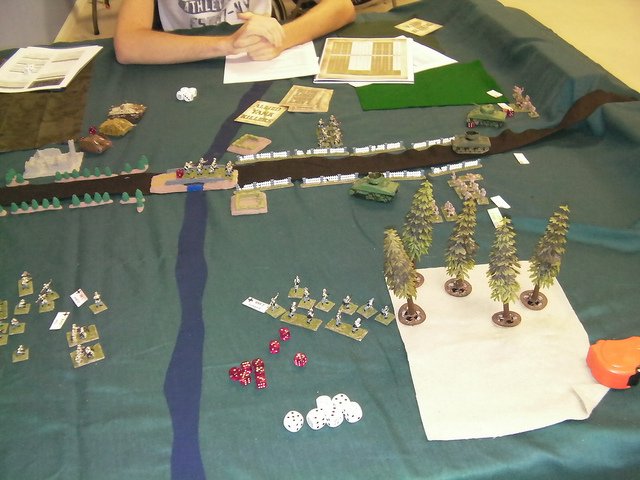The other weekend saw myself, Philip and Ru descend on Desmondo’s shed o’war to take part in another of his magnificent D-Day games (which have been documented here before). Once again I would be taking the part of ze Germans mainly as I had a very heavy night the night before so had hardly any sleep plus a quite substantial hangover so needed to reduce decision making as much as possible!
In a nice change from previous attempts at this scenario Des had increased the run in for the assault wave which helped Ru get to grips with the rules for the game and also increased the chances of things going wrong a bit too. After each landing craft or DD tank is moved we check to see if they ‘drift’ left or right and if they hit another vessel then things can go bang or head downwards quite rapidly and there’s also the added joy for the DD crews that they might get swamped.
These fun and games did lead to Ru losing his Company HQs although nearly all of the DD tanks made it to the shallows and now I was hoping for the chances of the incoming vessels striking mines working in my favour to further write down the attackers. This didn’t go so well with only two boats hitting a mine which caused heavy casualties to one of Ru’s platoons although Philip’s lads fared a lot better, just being badly shocked. It was going to be a tough fight for the defenders.
Once on the beach I could start to engage the invading forces but unfortunately for me the two AT guns I had off table positioned to fire down the beach both had very, very low amounts of available shots (I rolled for this before we started and had 1 shot in 1 gun and 2 in the other!) so I had to choose the right moment to use them and also hope that when those moments did come up I had the dice available to activate the guns.
Luckily for me they did and although one of my 3 shots missed the other 2 both brewed up vehicles (Ru’s Fascine carrying AVRE and Philip’s Sherman Crab) as they reached to bottom of the ramps of the LCT’s blocking the way for the following vehicles to exit. This would force the craft to back up and land again which would not only slow things down for the Brits a tad but also would mean that they might strike a mine whilst doing so, which unfortunately for me didn’t happen.
So, the majority of the assault troops were now ashore and so was a fairly sizable amount of supporting armour and various Funnies all intent on giving me a very hard time. My MG nests, infantry and mortars were doing their bit now too as was the one artillery strike I managed to call in but I couldn’t prevent Philip’s infantry from making it to the sea wall in front of my position even though they were caught in a particularly harsh bout of firing from my lads (a double phase was involved) and suffered quite a few casualties.
Ru’s command was heading over to the right away from the defensive nest and hence suffered less casualties, all his tanks being safe as the AT gun facing that direction was about as accurate as a fairground air rifle! Pretty soon the Brits started knocking out the AT bunkers by concentrated fire from DD Shermans and AVRE’s chucking their dustbins of doom at me and the writing was pretty much on the wall from then on.
Ru was the first one to get off the beach with his Shermans and Infantry taking advantage of the AVLB bridge and then proceeding to blow chunks out of the right hand side of the post whittling down the defending infantry in short order before then starting to advance his infantry further inland.
Phil had his bridge up against the seawall shortly afterwards and tried a rush with an infantry platoon first which I managed to repulse whilst he dropped a fascine on the left of my position which enabled a DD and a bulldozer to exit the beach. I managed to knock out the bulldozer by a lucky shot on the driver.
It was about now when the second wave consisting of another Infantry company plus armour was heading into the beach and Philip took command uttering the famous phrase “Don’t worry I know what I’m doing” and then promptly colliding two of his boats together sinking one! I then added injury to the many insults we were all chucking his way by hitting another boat carrying his Company HQ in with a mortar stonk, killing the CO.
Meanwhile on the beach, he was having a better time and decided to stop fannying about and launched an AVRE up his bridge which proceeded to literally crush the resistance of the infantry at the front of my position whilst also shrugging off an attempt to knock it out from my remaining AT gun. When he managed to take out this final surviving AT asset with his infantry pouring up the bridge behind now unopposed, with Ru’s Shermans behind my position and the second wave landing I decided the gig was up and I chucked in the towel.
Kamerad!
Once again it was a bloody marvellous day’s wargaming all carried in the greatest of sprits and I’d like to thank Des for hosting us and Ru & Philip for being such great opponents, what the hobby is all about.
Iain Fuller
More pictures from Desmondo:







































































































































































































































